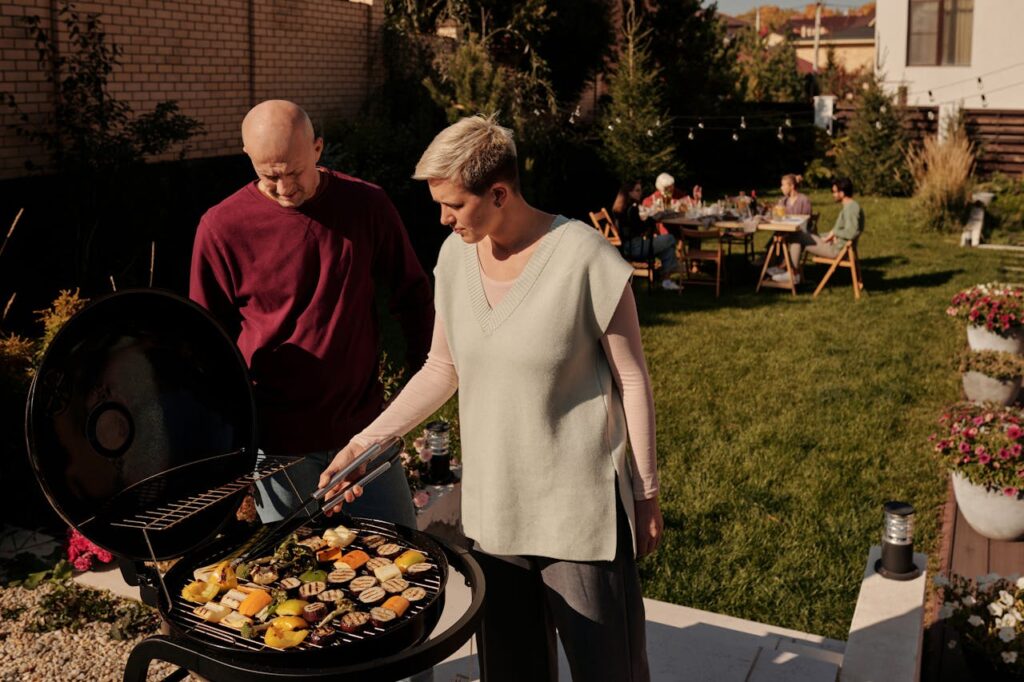
Summer is the season of outdoor cooking, where the tantalizing aroma of grilled food fills the air, and gatherings around the barbecue become a cherished tradition. Mastering the grill transforms your patio into a gastronomic heaven, with sizzling steaks, juicy burgers, and perfectly charred vegetables that delight family and friends. To elevate your grilling game, it’s essential to understand the techniques and secrets that professional chefs use to achieve perfect results every time. Here are six expert tips to help you become a grill master this summer.
1. Selecting the Right Equipment for Optimal Results
Investing in high-quality grilling equipment is the cornerstone of successful outdoor cooking. Each type of grill, such as charcoal, gas, and the adaptable outdoor flattop grill, has its own set of benefits. A charcoal barbecue produces a smokey taste that many enthusiasts like, although a gas grill is more convenient and allows more exact temperature control. The outdoor-ready flattop grill, however, stands out for its ability to cook a variety of foods evenly and simultaneously. Its broad, flat surface is ideal for searing meats, frying delicate foods like fish, and even preparing breakfast dishes like pancakes and eggs. Choosing the correct grill for your cooking style and tastes is the first step toward mastering the art of grilling.
2. Mastering Temperature Control for Perfect Cooking
One of the most important components of grilling is maintaining the proper temperature to cook food evenly and thoroughly. Different meals demand different heat settings, and mastering temperature control guarantees that your meats are precisely seared on the exterior while still juicy on the inside. It’s important to preheat the grill to the proper temperature. For high-heat cooking, such as searing steaks, make sure the grill is hot enough before putting the meat on it. On the other hand, it’s crucial to keep the temperature lower and constant while cooking big chunks of meat slowly. Using a meat thermometer allows you to get the proper doneness without guessing.
3. Marinades and Rubs: Elevating Flavor Profiles
Grilled dishes need more than just salt and pepper to enhance their taste. Rubs and marinades are essential for giving your food richness and depth. Tenderizing and flavoring meat, marinades are usually made using an acidic component (such as vinegar or citrus juice), oil, and spices. Allowing meats to marinade for many hours, or even overnight, yields more delicious and tender results. Rubs, on the other hand, are blends of dried herbs, spices, and salts that are rubbed into meat before grilling. They create a delicious crust that improves the taste and texture of grilled foods.
4. Perfecting the Grill Marks and Sear
Achieving those desired grill marks and a beautiful sear is about more than just appearance; it is about flavor. The Maillard reaction, which occurs when high heat is applied to the proteins and sugars in meat, produces a flavorful crust that improves the overall flavor. Try not to move the meat too much in order to achieve those amazing grill marks. After putting the meat on the grill, turn it 90 degrees to produce crosshatch markings and let it sear for a few minutes without moving. Additionally, using a clean, well-oiled grill grate helps to improve searing and avoid sticking. The key is to strike a balance between high heat for searing and avoiding burning, which can be achieved with practice and attention to timing.
5. Incorporating Vegetables and Fruits into Your Grilling Repertoire
Grilling isn’t only for meat; vegetables and fruits can be turned into delectable meals on the grill. Grilling adds smokey flavor and caramelization to vegetables such as bell peppers, zucchini, eggplant, and maize. Cut veggies into uniform pieces to facilitate consistent cooking. Their inherent tastes are enhanced when you season them with herbs and spices and lightly coat them with oil. Grilling fruits like pineapples, peaches, and watermelons enhances their inherent sweetness and adds a smokey, charred flavor. Fruits that have been grilled can be used as desserts, as sides, or even as an ingredient in savory recipes.
6. Ensuring Safety and Cleanliness for a Smooth Grilling Experience
A successful grilling session is not only about culinary skills but also about maintaining safety and cleanliness. Cleaning the grill properly before and after use helps to avoid residue accumulation and decreases the possibility of flare-ups. A safe cooking environment is ensured by routinely emptying grease traps and cleaning the grates with a wire brush. Additionally, having a water spray bottle nearby is essential for handling any unforeseen flare-ups. Beyond the grill itself, safety measures include keeping children and pets away from the cooking area and keeping a safe distance from combustible items.
Conclusion
Mastering the grill involves more than just cooking techniques; it’s about creating an experience that delights the senses and brings people together. The aroma of sizzling meats and the sight of properly scorched veggies elevate a basic dinner to a remarkable experience. Every stage of the grilling procedure, from choosing the proper tools to guaranteeing safety, adds to the delicious result at the end. Embrace these pro tips and enjoy a summer filled with flavorful, perfectly grilled dishes that showcase your newfound expertise.


